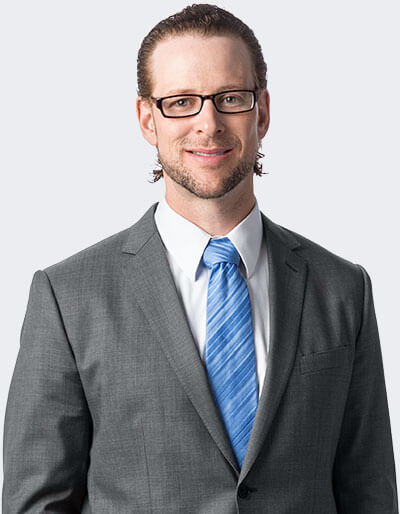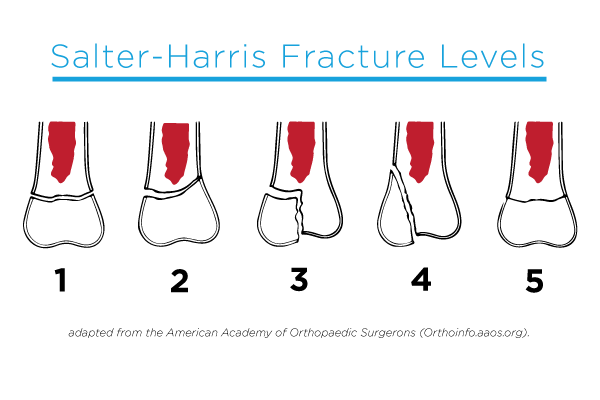02/11/2022
While adults and children are both susceptible to bone injuries, one of the most common fractures in children is a growth plate fracture. These cartilage discs are found toward the end of long bones (arms and legs) and are the last areas to harden into bone. They are most commonly found in the elbow area. Growth plate fractures can be caused by repetitive strain from sports activities or trauma caused from falls and other accidents.
How is the severity of a Growth Plate Fracture measured?
The Salter-Harris Physeal Fracture Classification Scale is a universal system for measuring the severity of a growth plate fracture. There are five levels to the scale with the level of severity increasing as the number increases.
The higher the number, the greater chance for physeal arrest, also referred to as growth arrest, which causes abnormal bone growth. This could include slowing the growth of the bone, bone angulation, or preventing it from growing at all.
What are the five levels of growth plate fracture?
Salter-Harris 1 Fracture
This fracture consists of compression or separation of the growth plate. It appears to be a horizontal fracture through the growth plate. An MRI could be the only solution for visualizing the fracture. Most patients heal after 4-6 weeks of immobilization of the area in a cast or sling.
Salter-Harris 2 Fracture
The most common growth plate fracture, level 2 is a fracture across the growth plate, but exiting the bone through the metaphysis, which is the layer of bone located above the growth plate.
Salter-Harris 3 Fracture
This type of fracture does not break across the entire growth plate. Rather, it exits through the epiphysis, which is located at the end of the bone. This type of fracture is more uncommon and is more likely than not to require surgery due to the instability of the joint caused by this fracture.
Salter-Harris 4 Fracture
This uncommon fracture is a vertical break through the area above the growth plate, through the cartilage area and exits through the end of the bone. A level 4 fracture requires greater intervention, including resetting the bone and immobilization using a cast or other treatment.
Salter-Harris 5 Fracture
A level 5 fracture is often caused by an event that crushes the bone, including the growth plate. With this type of fracture growth arrest is more likely to occur, which can lead to slowed or prevented growth.
What are the most common treatments for growth plate fractures?
Treatment of the injury depends on the type and severity of the fracture. For lesser injuries, immobilization with fiberglass casts is used. For more severe injuries, the fracture will need to be reduced, which means the bone pieces will need to be put back in the correct position and held there. This may be held with a cast or through a surgical procedure. Following surgery, the bones are immobilized by the use of casts or slings.
What are the risks of the same bone being fractured more than once?
Each time the growth plate is fractured, the risk for physis arrest rises. It is imperative to seek medical attention immediately and follow an orthopaedic surgeon’s treatment plan accordingly to prevent future injury.
Does the treatment plan include follow up appointments?
Yes. Any growth plate fracture will include a series of follow-up appointments to monitor the healing and health of the growth plate. Through ongoing radiographic images, your orthopedic surgeon can determine if a normal growth rate has been re-established. When satisfied this is happening, treatment may cease.
What are the risks of not seeking medical attention immediately?
If a growth plate injury, regardless of the severity of the fracture, is not given proper attention right away, your child could experience growth arrest. Regardless of whether there is a partial or complete growth plate failure, the result could be slowed growth or no growth. The permanent effect being leg or arm length discrepancies or angular deformity of the affected limb.
If an arm or leg discrepancy or deformity occurs, a more significant corrective surgical procedure may be indicated to correct the bone defortmity.
Do you think you or your child may have a growth plate fracture? Request an Appointment or Text (402) 609-3000 to ask questions or schedule an evaluation with an expert.



